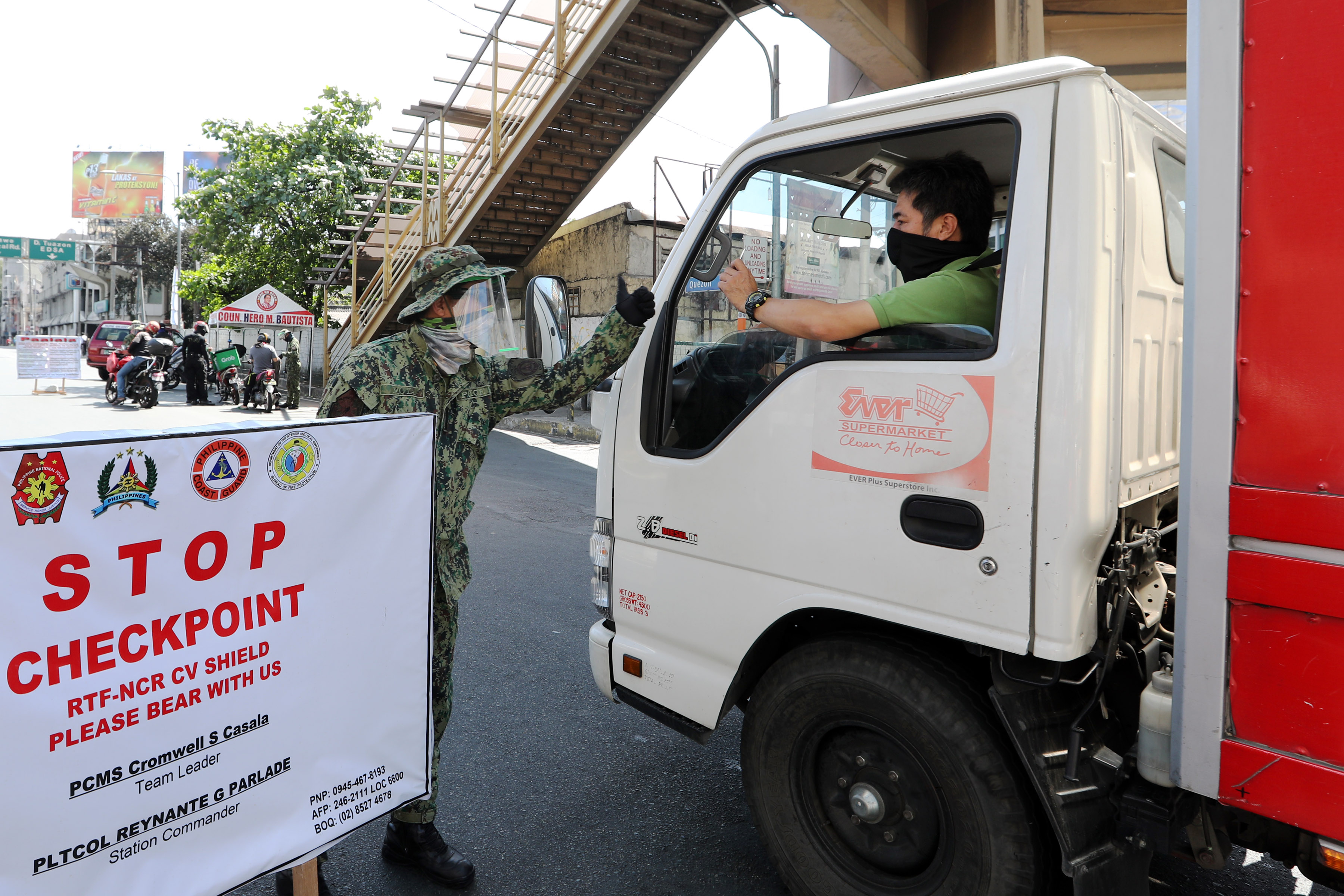News
200 thermal scanners distributed to cops at NCR checkpoints

FILE: A Quezon City Police District (QCPD) personnel gives the thumbs-up sign to the driver of a supermarket delivery van after presenting documents at a checkpoint near Welcome Rotonda in Quezon City on Sunday (March 29, 2020). (PNA photo by Joey O. Razon)
MANILA – A total of 200 thermal scanners have been distributed to various quarantine control points (QCPs) in Metro Manila, the Joint Task Force Corona Virus Shield (JTF CV Shield) said Friday.
In a press statement, JTF CV Shield commander, Lt. Gen. Guillermo Eleazar said this in line with efforts to expand the Rapid Pass System, an online identification system using QR codes to expedite the movement of health workers and other front-liners amid the enhanced community quarantine.
Eleazar said the opening of more QCPs for the implementation of the Rapid Pass System is expected to address the long queues of private and non-cargo vehicles at the QCPs.
Policemen manning the QCPs would just scan the QR codes via the scanning machines that are connected to the Rapid Pass System database.
The process also lessens the physical contact between law enforcers manning the checkpoints and the front-liners to contain the spread of the coronavirus disease (Covid-19).
The Rapid Pass System has been implemented in five QCPs early this month.
With the distribution of more scanners, a total of 48 QCPs in Metro Manila are now implementing the Rapid Pass System.
Those QCPs are located in Muntinlupa City, Paranaque, Las Pinas, Taguig and Makati in the southern part of Metro Manila; Caloocan, Valenzuela, and Malabon which are in the northern part of Metro Manila; Pasig and Marikina in the eastern part of the metropolis; and in Quezon City.
Eleazar, however, clarified that the implementation of the Rapid Pass System is not mandatory at this moment since identification cards and other documents that could be presented by an Authorized Person Outside Residence (APOR) will still be honored at the QCPs.
Under the Rapid Pass System, each individual included on the list of the APOR would be given a QR Code that would reflect the basic information of the bearer once scanned at the QCPs.
The basic personal information that would reflect from the Rapid Pass System are based on the online application submitted by the front-liners and other persons exempted from the home quarantine.
The QR Code is sent through electronic mail once the application is approved. The owner of the QR code could save it to his smartphones or print it and place it on identification cards attached on the lanyard for easy access at the QCPs.
“We have to clarify that the QR code must be for each APOR and not for vehicles. For example, if the vehicle has three occupants including the driver, all of them must show individual QR codes. The vehicle has no bearing on us. It is the people inside that we are checking,” he added.
To ensure that the QR code is not shared with other people, the QR code would reflect the photo of the approved APOR applicant on the scanning machine.
The scanners are connected to the Rapid Pass System main database to ensure regular updates of the approved APOR applicants.





















